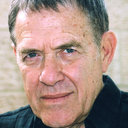Painful temporomandibular disorders and headaches in 359 dental and medical students.
Keywords
Abstract
OBJECTIVE
to assess the prevalence of headaches and painful tempormandibular disorders (TMDs) and examine these via demographic and specific lifestyle parameters, as well as examine the relationship among TMDs, headaches, and depression rates.
METHODS
a group of 359 medical and dental students completed a detailed questionnaire regarding demographic features and the presence of headaches and facial pain. The survey included a section on lifestyle (nutrition, alcohol and tobacco consumption, physical activity) and a Zung depression assessment.
RESULTS
about eleven percent of the subjects reported pain: 8.6% from the jaw joint, 1.7% from the muscles of mastication, and 0.8% had both (ie, painful TMD). Eighty-three percent reported a lifetime prevalence of any headache, most of which were episodic tension-type headaches (56.9%) or migraines (19.2%). There was no significant correlation between headache diagnosis and the presence of painful TMD. Patients with painful TMD had higher depression scores than patients without and smoked more tobacco. This was not observed in headache patients. Patients with headache complained of significantly more dizziness and fatigue, particularly in the migraine and frequent episodic tension-type headache groups.
CONCLUSIONS
TMD patients should be carefully assessed for the presence of emotional problems and referred to a suitable care provider.



